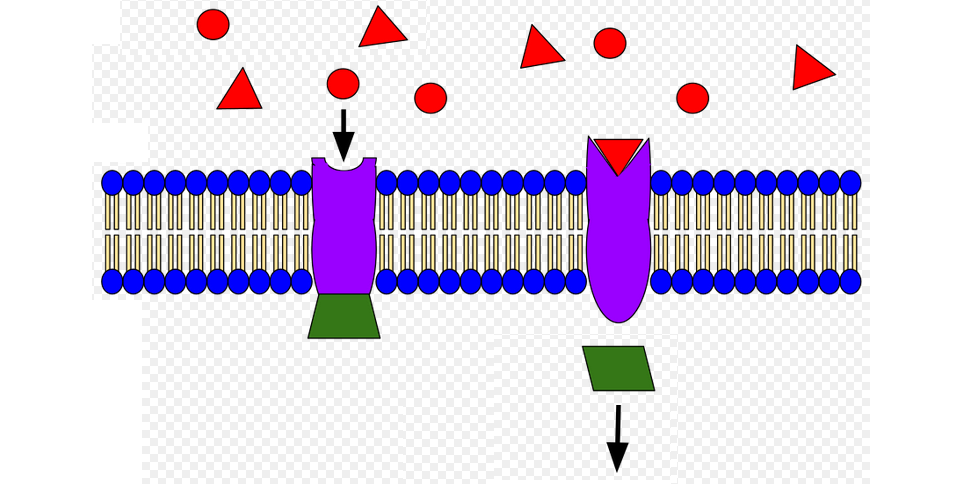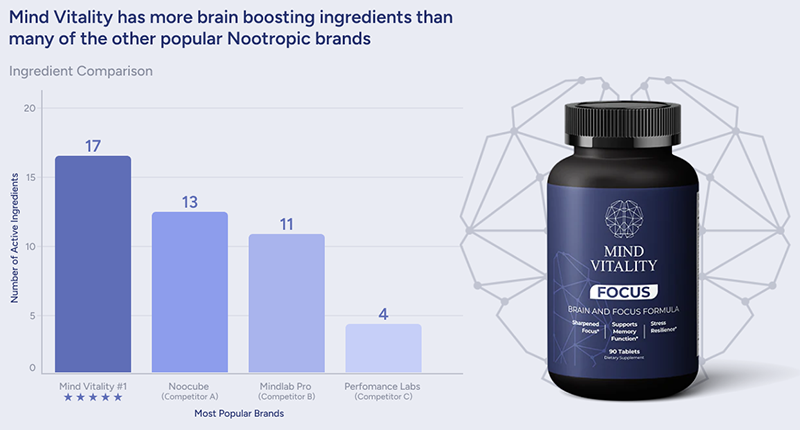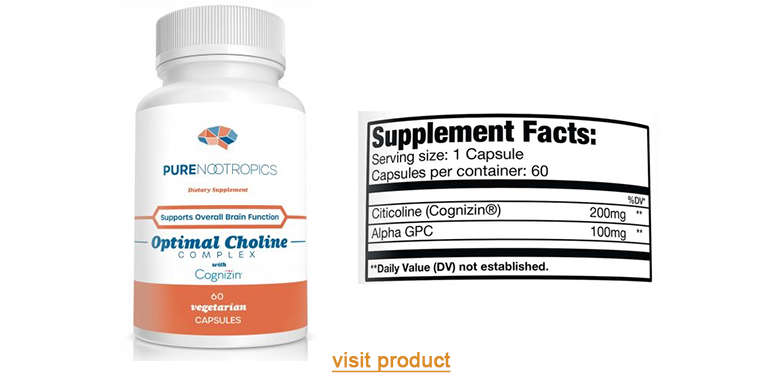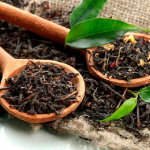Nootropics are brain-enhancing nutrients or drugs, and choline is one of the most important. Choline is a vitamin-like nutrient that’s essential to a properly functioning brain. Math and linguistic skills, logic, learning ability, and memory all rely on the body having adequate levels of choline.
Contents
What Is Choline?
Choline (pronounced KOH-lean) isn’t a mineral. And it’s not a vitamin, though it is sometimes grouped with the vitamin B complex because it has similarities. It’s a derivative of the amino acid serine, but it isn’t an amino acid or a protein. Consider it a vitamin-like, water-soluble compound that serves as a building block for several other important compounds.
Choline Molecular Structure
The choline molecule has the structure shown on the left of the figure below. Choline is an important molecule, and it’s also a component of other important molecules, including the neurotransmitter acetylcholine. From its name — acetylcholine — and as shown on the right of the same figure, choline is a part of the molecular structure of acetylcholine.
As you’ll read ahead, the fact that a big function of choline is to act as a precursor to acetylcholine (through chemical reactions choline can become acetylcholine) is of vital importance to cognition and brain health.

The molecular structure of choline also makes it a good back up source of methyl groups. A methyl group is nothing more than one carbon atom along with three hydrogen atoms. You can see in the above figure that a choline molecule contains three methyl groups, so another function of choline is to contribute methyl groups when the brain’s demand for them is high (which it often is).
While methyl groups are each very simple structures, they’re important to the brain because they’re a necessary part of many processes that affect brain health. The construction of the hormone melatonin and the neurotransmitter epinephrine rely on methyl groups, as does gene expression. Gene expression is the act of DNA instructions being converted into a protein. Gene expression is what enables a cell to respond to changes in its environment.
Food Sources of Choline
Your liver makes some choline, but not nearly enough to satisfy your body’s needs — the majority is obtained from your diet. Beef liver, salmon, and the yolk of eggs are some of the best food sources of choline. Eggs are sometimes referred to as a brain food for this very reason — they are rich in choline (mostly from the yolk of the egg). Here’s a list of foods with choline — the higher up in the list, the more choline that food has.
- Beef liver
- Salmon
- Egg yolk
- Split peas
- Navy beans
- Beef
- Turkey
- Chicken breast
- Pork chops
- Shrimp
- Cauliflower
- Brussel sprouts
The Neurotransmitter Acetylcholine
Neurotransmitters — messenger molecules that nerve cells release to regulate and signal other nerve cells — affect a whole range of processes including energy levels, pain response, emotions, and mental performance.
Most people are familiar with two important neurotransmitters: dopamine and serotonin. These neurotransmitters (that can also act as hormones) are known for their importance in mood regulation. That’s why both are often referred to as “happy hormones.” While these two are the best known, there’s another, lesser known, neurotransmitter that is at least as equally important — acetylcholine. No discussion of choline and brain function would be complete without some details of acetylcholine.
Acetylcholine, or ACh, is one of the most abundant neurotransmitters, and plays a role in memory, thinking, concentration, linguistic skills, reasoning, and several other brain functions. You don’t want to have chronically low levels of acetylcholine — long-term shortages of this neurotransmitter are associated with memory impairment and brain disorders such as Parkinson’s disease and Alzheimer’s disease.
Choline Increases Acetylcholine
There is no such thing as acetylcholine supplements — you won’t find a nutritional supplement called “acetylcholine.” Instead, you’ll need to find a supplement that encourages the body to release more of this neurotransmitter. Because of acetylcholine’s outsized role in brain functions, a compound that can increase the release of acetylcholine is going to be a powerful nootropic. Choline is just such a compound.
Choline is a precursor of acetylcholine — a chemical reaction involving a choline molecule and an acetate (acetic acid) molecule form acetylcholine. Acetate is created by the mitochondria in cells, and is very common throughout the body, while choline is created only at very low levels, and needs to come from the diet. Which explains why a person takes only choline supplements, and doesn’t also need acetate supplements, to boost their acetylcholine levels.
Choline Is a Cholinergic
The term cholinergic refers to something that’s involved in the actions of the neurotransmitter acetylcholine. Neuron cell receptors that use acetylcholine are said to be cholinergic. A drug that enhances, or inhibits, acetycholine is said to be a cholinergic drug. And a supplement that does the same — such as choline — is said to be a cholinergic supplement.
Cells have receptors on their surface. The purpose of a cell receptor is to “listen” to what’s going on outside of the cell, and take this information about fluctuating conditions and pass it on to the inside of the cell. The cell is then able to initiate an appropriate response based on this information. There are several types of receptors, and each type only interacts with specific hormones or neurotransmitters to gather information it is able to work with.
The image below provides a simplified illustration of different types of receptors on a cell wall interacting (binding) with specific types of neurotransmitters that exist outside the cell, and then passing received information into the cell.
Cholinergic neurons (nerve cells) are capable of creating acetylcholine. Cholinergic receptors are receptors on the surface walls of some cells — they get activated when they bind with the acetylcholine that has been produced and released by cholinergic neurons. The whole system of acetylcholine production, release, and use is cholinergic neurotransmission — a system crucial for concentration, focus, mental clarity, learning, and memory.

Cholinesterase Inhibitors Increase Acetylcholine
Choline brings more acetylcholine into the system by being a acetylcholine precursor — more choline actually creates more acetycholine. There’s another way to increase acetylcholine levels that doesn’t involve making more of it.
Cholinesterase is an enzyme that has the opposite effect of choline. Instead of making acetylcholine, it breaks it down — it removes the neurotransmitter from the system. That sounds like a bad thing, but it’s not. Neurotransmitters are short-lived molecules — they perform their function, and then they break down. That’s the natural lifespan of a neurotransmitter.
If a person wants to increase their acetylcholine levels, though, lessening the effects of cholinesterase would be a good thing to do. That act wouldn’t cause more acetylcholine to be produced, but it would keep existing acetylcholine in the system longer. So you’d experience higher levels of this neurotransmitter for longer periods of time.
A cholinesterase inhibitor is anything that decreases cholinesterase. With less cholinesterase in your system, it takes longer for your body to break down existing acetylcholine. This is sound science used by some medications that treat the early stages of Alzheimer’s disease. The prescription medications rivastigmine (brand name Exelon), galantamine (Reminyl), and donepezil (Aricept) all work by blocking cholinesterase.
Cholinesterase Inhibitors Are Cholinergics
A little back you read that choline is a cholinergic — it plays a role in affecting acetylcholine. Cholinesterase inhibitors also play a role in affecting acetylcholine, so cholinesterase inhibitors are also referred to as cholinergics.
Not all cholinergics are prescription medications. Huperzine A (pronounced HOOP-ur-zeen) is a naturally occurring compound found in some plants, including the Chinese herb Huperzia serrata, and it’s known to be a powerful, natural cholinesterase inhibitor.
Which is the better supplement for increasing acetylcholine, choline or huperzine A? If you’re going to pick one, then choline is the most common choice. For people convinced that maintaining higher levels of acetylcholine is of vital importance, taking both supplements is a must. They believe there’s a synergistic effect, where taking both compounds is better than taking just one.
In the case of taking both types of supplements, the preferred technique is to take choline supplements daily, and cycle huperzine A supplements on and off. Take the choline each day, every day. Take the huperzine A supplement every day for a month, then stop for a week. Repeat this cycle indefinitely. Read more about dosages in the Choline and Huperzine A Stack Dosages section later in this article.
Choline Brain Health Benefits
Choline contributes to increased levels of acetylcholine. The extra release of this neurotransmitter provides several cognitive benefits, and may be choline’s main nootropic benefit. But choline has other brain health benefits, too.
Choline Forms Cell Membranes
Every cell has a cell membrane (also called a plasma membrane) that is an outer boundary of the cell and holds the cell together and provides protection for the cell. An important job of the membrane is to regulate the substances that are allowed to enter and exit the cell.
The cell membrane, or wall, holds receptors that govern how the cell interacts with its environment. Substances such as hormones and neurotransmitters bind to these receptors and pass messages that trigger a cell to carry out some action.
Over 90% of a body’s choline exists as a component of cell membranes, including a brain cell’s cholinergic receptors that bind with acetylcholine.
Choline Is Involved in Gene Expression
Genes are the spaghetti-like DNA structures that make up the chromosomes within cells. Gene expression is the process of a cell’s DNA creating proteins within the cell, as guided by a DNA recipe of sorts. Gene expression covers a lot of ground. It involves the types and amounts of proteins to be produced by a cell, as well as when they should be produced.
Cells creating proteins might not seem like one of the most important tasks a body performs, but it is. That’s because there isn’t just one “thing” that’s a protein. Hormones, hormone receptors on cell walls, and enzymes are all types of proteins, and these various protein molecules control every aspect of a body. In short, absent gene expression, no human — or organism of any type — can live.
Proteins aren’t uniformly created by cells. A human’s facial expression changes from moment to moment, in a manner appropriate for the feeling at any given moment. Gene expression works in a similar manner in that a cell’s genes express themselves — or create proteins — of different types at different times, depending on the body’s needs at any moment. Any time there is a need for a particular protein gene expression manufacturers that protein.
Choline’s role in gene expression comes in the form of contributing to the expression of proteins that are critical to memory and learning. One of those proteins is acetylcholine — a molecule that is a neurotransmitter, a hormone, and, yes, a protein.
Choline Protects Memory and Loss of Brain Function
Choline supplementation brings about the release of more acetylcholine, and this neurotransmitter plays a strong role in your memory.
Acetylcholine is important to supporting different types of memory, including working memory (the ability to remember and use relevant information while in the middle of an activity), long-term memory (responsible for the storage of information for an extended period of time).
Acetylcholine also supports different phases of memory, including memory formation, consolidation (transforming recent learned experiences into long-term memory), and retrieval.
Choline and Neuroplasticity
Neuroplasticity, or brain plasticity, is the ability of the brain to reorganize its connections, functions or structure in response to stimuli. As a component of cell membranes and acetylcholine, choline helps keep your brain elastic — even as you age.
As you age your brain becomes less elastic, increasing the likelihood of memory loss, dementia, or developing Alzheimer’s disease. Increased levels of choline can keep your brain more elastic and lessen the chances of experiencing any of these cognitive issues. One study showed that many Alzheimer’s patients have acetylcholine levels up to 90% lower than average.
How to Take Choline Supplements
Choline supplements are available in a few different types — for nootropic purposes some types are better than others. You’ll want to take the right amount of choline, and you might consider taking both choline and huperzine A together for even better results.
The Best Form of Choline to Take
There are four types of choline available as supplements — if you’re planning on taking choline for its nootropic benefits you’ll want to avoid two of these.
Choline bitartrate and choline citrate are the least expensive of the four types of choline. While either of these are satisfactory for anyone who has a choline deficiency and is looking to increase choline levels generally, neither is a good choice as a nootropic. That’s because neither choline bitartrate or choline citrate are readily absorbed and delivered to the brain.
For a nootropic choline that crosses the blood-brain barrier and easily converts to the neurotransmitter acetylcholine, go with one of the other two choline types: Alpha GPC or CDP choline (also referred to as Citicoline). Optimal Choline Complex from Pure Nootropics is a good nootropic choline supplement option as it consists of a combination of both these preferred forms of choline.
Choline Dosages
The recommended choline daily intake is approximately 500 mg. Because the body produces very little choline, and choline is present in significant amounts in very few foods (see this article’s Food Sources of Choline section), it’s quite likely that you are one of the almost 90% of people with a choline deficiency.
Choline supplements commonly have 250 mg to 300 mg of choline per capsule, so a couple of such capsules per day is a good dosage. The safe upper limit has been established to be 3,500 mg per day, so if you want to take more than a couple of capsules daily you can do so without concern.
Taking Choline During Pregnancy
Choline has been found to be important for prenatal brain development, so pregnant women are encouraged to take choline supplements. Here again 500 mg is the recommended daily dose.
When to Take Choline
Choline can be taken at any time during the day, but for most people it’s preferable to take it early in the day as for some people it can interfere with sleep if taken in the evening.
As is the case with many nootropics, absorption is best on an empty or near-empty stomach — so take your choline supplement at least 15 minutes before a meal. If you have a sensitive stomach it’s perfectly acceptable to take your dose with a small snack.
Choline and Huperzine A Stack Dosages
Choline, especially in the form of Alpha GPC or CDP choline (Citicoline), is a precursor to acetylcholine — so its effect is to increase acetylcholine levels by having the brain produce more of this neurotransmitter.
Huperzine A is a cholinesterase inhibitor that slows the disintegration of existing acetylcholine — so its effect is to prolong, or maintain, acetylcholine levels by delaying the breakdown of acetylcholine that is already present.
By combining choline (Optimal Choline Complex) with huperzine A (Huperzine A Capsules), you can comprehensively influence acetylcholine levels.
By taking both supplements at the same time you bring about an increase in acetylcholine levels and you prolong the action of this newly release neurotransmitter.
As far as supplement cost, you’ll experience little or no increase when taking both supplements. That’s because if you take both, you’ll adjust the dosages of each to half of what you’d take should you use just one supplement.
If you’re taking only Alpha GPC or CDP choline, and you take 600 mg per day (a common dose), you can cut that in half and take just 300 mg per day if you’re also taking huperzine A.
If you’re taking only huperzine A, and you take 400 mcg per day (a common dose), you can cut that in half and take just 200 mcg per day if you’re also taking Alpha GPC or CDP choline.
Choline Side Effects
Choline is known to have an excellent safety profile — side effects are extremely rare and, if they do occur, are typically very mild. Of the few people who experience side effects, stomach aches and a little nausea are the most common. That can often be eliminated by taking the supplement with a meal, or lowering the amount taken.
More severe side effects seem to only be experienced by people who take very large doses of choline — daily amounts in excess of 3,500 mg. Typical daily dosages are 600 mg, with some people comfortable going as high as 1,200 mg — so there’s no need to ever be taking anything close to 3.5 gms per day.
Conclusion
Choline is a vitamin-like nutrient that acts as a powerful nootropic. Choline is essential to a properly functioning brain, and plays important role in brain cell health and improved levels of logic, learning, memory, and linguistic skills.
Choline works largely by being a precursor to acetylcholine, a key neurotransmitter that affects just about all aspects of cognition.
Of the different types of available choline, Alpha GPC and CDP choline are the best choices for anyone interested in getting the full nootropic benefits of a choline supplement.
Huperzine A is a cholinesterase inhibitor that slows the breakdown of acetylcholine. Some people combine, or stack, choline and huperzine A to both simultaneously bring about the release of more acetylcholine and keep existing acetylcholine in their system for a longer period of time.






